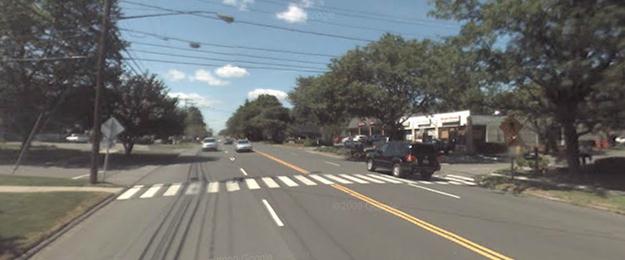When we design our cities, towns, and streets so that it’s easy to walk and bike, it means less driving and lower greenhouse gas emissions. But in Connecticut, there’s still a long way to go when it comes to making our streets safe for everyone who uses them. Few things make that clearer than Tri-State Transportation Campaign’s annual Most Dangerous Roads for Walking report. On February 25, TSTC released this year’s edition of the report, which found that 100 pedestrians were killed while walking in Connecticut between 2009 and 2011.

In that time period, six people were killed while walking along or attempting to cross Route 1, making the road the deadliest for pedestrians in the state, a point that was reiterated on Saturday when another pedestrian was killed while attempting to cross Route 1, in Westport. Route 66 and US-44 each had three fatalities. Pedestrian deaths were concentrated in the denser parts of the state, with almost three-quarters of the total taking place in New Haven, Hartford, and Fairfield Counties.
The vast majority of fatalities occurred on what engineers call “arterials,” or multi-lane roads with fast traffic and key destinations, without adequate infrastructure for people trying to get there on foot – including bus and train riders, who often walk to their final destination. In the tri-state region, 60% of pedestrian deaths take place on arterials – even though arterials represent only 15% of roadways. These disproportionately dangerous roads are a prime target for “complete streets” improvements that make roads safer for everyone.
In 2009, Connecticut passed a complete streets law requiring that transportation projects accommodate all users of the road. But there’s more work to be done to translate the law into agency policy. For example, the Department of Transportation’s Highway Design Manual, a standard reference book for state engineers and designers, is stuck in a pre-complete-streets era. In neighboring Massachusetts, project designers get detailed guidance on traffic calming techniques to improve safety at problem locations. Readers of Connecticut’s manual are told that traffic calming is not typically done on state roads and that local communities should write their own standards.
Better enforcement measures are also needed. Advocates are pushing for a “vulnerable users” law that would require driver re-training and community service for people who drive carelessly and injure or kill pedestrians, cyclists, highway workers, and others who are most vulnerable. Safer streets for all users can also create additional benefits for communities and the state.
According to Smart Growth America, if more people walked or biked instead of using their car for trips shorter than a mile, we’d lower carbon dioxide emissions by up to 22 million metric tons a year. Making Connecticut’s roads safer for walking will lead to quality of life, public health, and – as our report underscores – safety benefits as well.
Steven Higashide is senior planner and Connecticut coordinator for the Tri-State Transportation Campaign.
